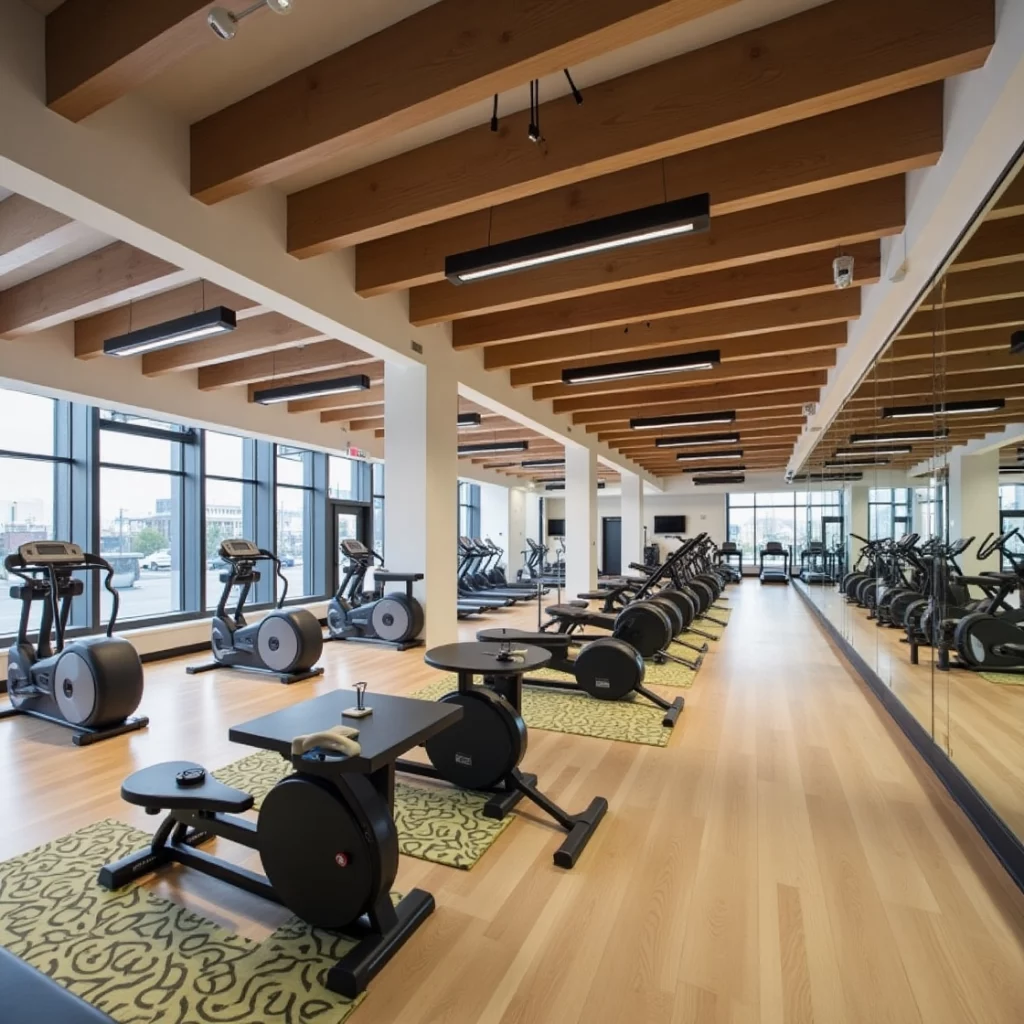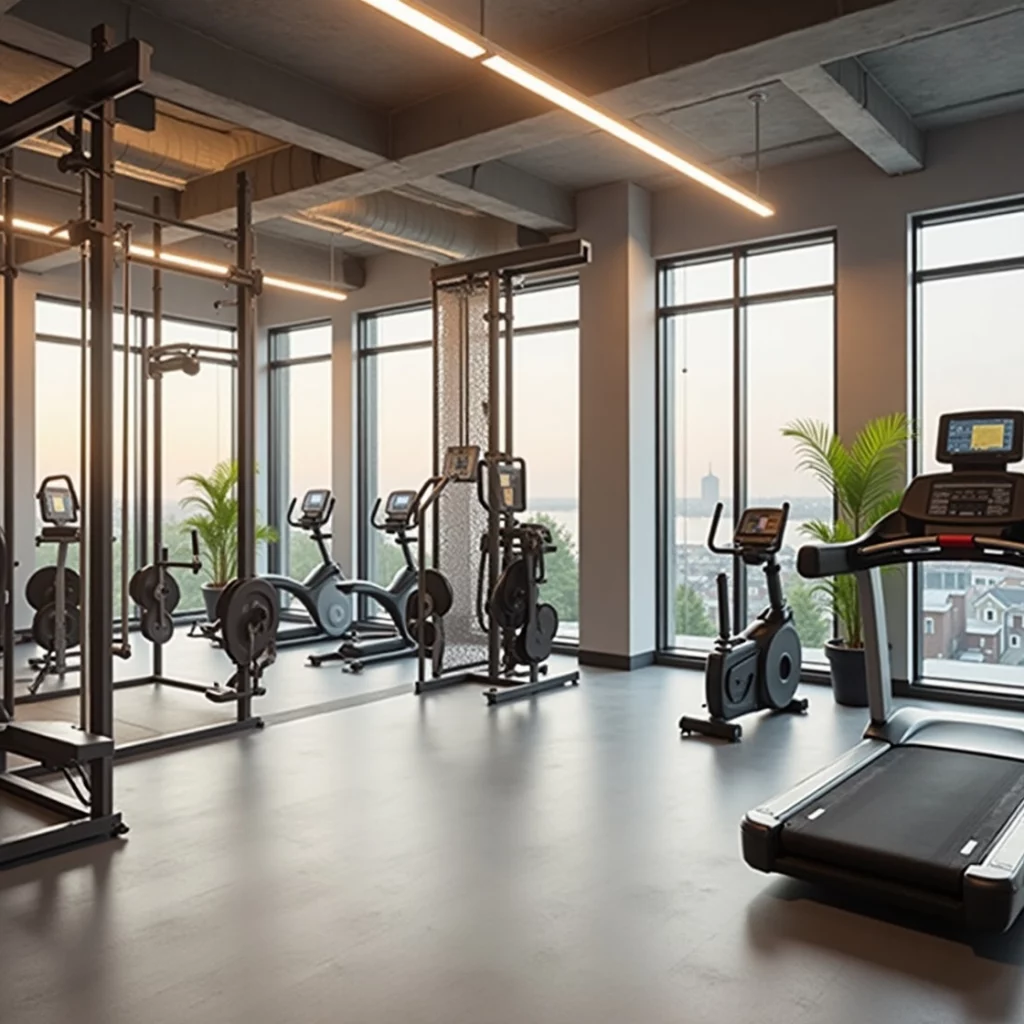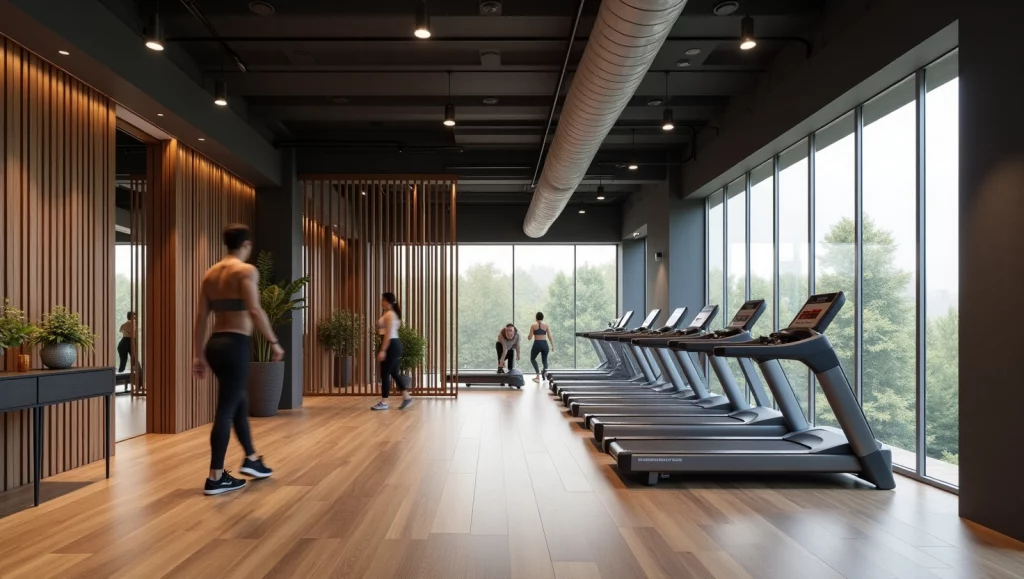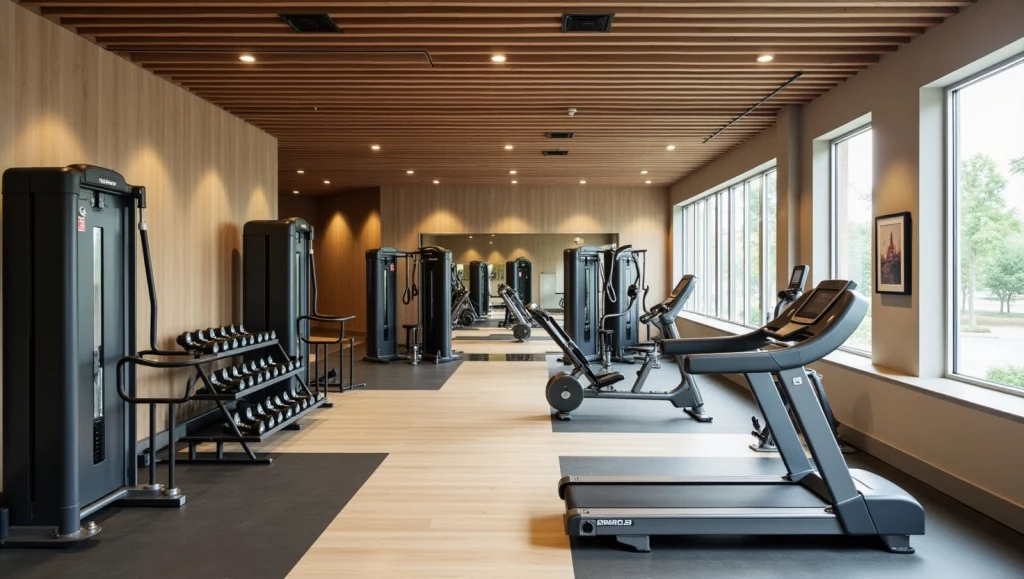In the past, gym spaces were often seen as functional but uninspiring places—sparsely decorated with the sole aim of providing equipment for fitness enthusiasts. However, over the last few years, fitness environments have experienced a dramatic transformation, moving beyond mere functionality to become spaces that focus heavily on aesthetics, atmosphere, and user experience. As wellness continues to grow as a central aspect of modern living, fitness spaces are evolving into design-driven environments that prioritize both physical health and emotional well-being. These innovative gym spaces are an exciting testament to how thoughtful design can elevate fitness experiences, promoting not just better workouts but also a stronger connection to self and community.

The Changing Role of Gym Spaces in Modern Life
Historically, gyms were purely spaces for physical exertion, typically filled with rows of treadmills, weight machines, and little else. Function was paramount, and the visual environment often took a backseat. However, in recent years, people have begun to understand that a gym isn’t just a place to work out—it’s also a space where individuals can unwind, destress, and recharge. The rise of boutique fitness studios, wellness centers, and holistic fitness offerings have contributed to this shift, with businesses seeking to offer experiences that go beyond the physical workout.
For many people today, the gym experience is about the total environment—how it makes them feel when they walk in, how it encourages engagement with the activity at hand, and how it fosters a sense of belonging and community. The trend toward design-driven fitness environments aligns with this broader cultural shift, as gyms increasingly incorporate elements of architecture, design, and branding to enhance the user experience.

The Aesthetics of Fitness: More Than Just a Pretty Space
The primary question that many gym owners, designers, and architects are exploring is: How can design influence the way people experience fitness? The answer lies in creating spaces that evoke emotions and inspire energy. The aesthetics of fitness environments are increasingly becoming as important as the equipment itself.
A well-designed gym goes beyond just the colors on the walls or the type of flooring—it integrates architecture, lighting, furniture, and even sound design to create an immersive experience. For instance, many modern gyms are incorporating biophilic design principles, integrating natural elements like plants, wood, and natural light into the space. The idea is to create a calm and inviting atmosphere that makes users feel at peace and connected with nature, a concept that is especially beneficial for stress reduction during high-intensity workouts.
Lighting is another crucial element in design-driven fitness spaces. Many modern gyms utilize adjustable lighting that can shift based on the time of day or the energy of the class. Soft, ambient light might be used for yoga sessions, while bright, dynamic lighting can energize users during cardio workouts. The strategic use of lighting helps set the tone for various activities, creating an environment that is not just visually appealing but also functional.

Incorporating Branding and Identity into Fitness Design
As fitness spaces become more sophisticated, they are also becoming more personalized and reflective of the brand’s identity. Each gym, boutique fitness studio, or wellness center is trying to carve out a unique niche for itself, and one of the most powerful ways to do so is through design. In fact, many modern gyms are viewed as experiential brands that rely on design elements to establish their identity and connect with clients on an emotional level.
Take, for example, the design of Equinox gyms, known for their sleek, upscale interiors. Equinox locations are designed to evoke luxury, with polished concrete floors, warm lighting, and state-of-the-art equipment. The emphasis on high-end design, coupled with the inclusion of spas, cafes, and other luxury amenities, creates a space that feels more like a lifestyle club than a traditional gym. This type of design isn’t just about offering a workout—it’s about presenting an experience that aligns with a certain social status and aspirational lifestyle.
On the other end of the spectrum, there are fitness spaces that embrace a minimalist or industrial aesthetic, which speaks to a different target audience. Spaces with exposed brick, simple concrete floors, and large open windows create an atmosphere that feels raw and unfiltered. These environments appeal to those who prefer a no-frills approach to fitness, where the focus is purely on performance and effort, rather than luxury or decor.
What unites these diverse design approaches is the intention to create a space that embodies the gym’s core values and enhances the experience of its members. Whether it’s about luxury, minimalism, or community, thoughtful design brings these values to life in ways that make a deeper connection with members.

The Importance of Community in Fitness Spaces
As gyms and fitness spaces evolve, there is also a growing recognition of the importance of community. Modern fitness is not just about individual workouts—it’s about connection, collaboration, and social engagement. This understanding has led to the design of spaces that facilitate interaction and encourage a sense of belonging.
Many fitness centers are embracing open-plan layouts with communal areas, allowing members to interact before, during, or after their workouts. In some gyms, design elements like lounges, cafes, and even co-working spaces are integrated into the overall layout to foster social connections. These spaces allow individuals to relax, converse, and share their fitness journeys with others, making the gym experience about more than just physical transformation but also social interaction and personal growth.
For instance, functional areas such as “recovery zones,” where members can stretch, meditate, or even engage in post-workout nutrition and wellness, are becoming more common. The integration of these spaces within the gym design creates a holistic fitness environment that supports both the body and the mind. These zones not only help improve physical health but also contribute to overall well-being by creating a space where members can recharge and socialize.

The Impact of Technology on Gym Design
Technology also plays an important role in shaping the modern fitness space. With the rise of virtual fitness classes, smart equipment, and interactive screens, gyms are being designed with technology in mind. Smart lighting systems, virtual fitness mirrors, and even augmented reality tools are increasingly integrated into the workout experience. These technological additions enhance the effectiveness of workouts, allowing users to track progress, engage with trainers, and access personalized routines, all while being immersed in a space that reflects modern trends in fitness and design.
Another exciting development is the inclusion of gamification elements in fitness design. Some gyms are incorporating digital screens, leaderboard displays, and fitness apps that encourage friendly competition and provide real-time feedback to users. These interactive features make workouts more engaging and enjoyable, transforming them into experiences that are both motivating and rewarding.

Conclusion: The Future of Design-Driven Fitness Spaces
The evolution of gym spaces into design-driven environments is not just a passing trend but a reflection of the broader shift in how we approach fitness and wellness. As fitness continues to become an integral part of modern lifestyles, the role of gym design will only continue to grow. The spaces we work out in should inspire, uplift, and connect us, making each workout not just an act of physical exertion but a holistic, enriching experience.
Design-driven fitness spaces are transforming the way people engage with fitness, offering not only state-of-the-art equipment but also carefully curated environments that foster well-being, community, and identity. As technology continues to evolve and design principles continue to innovate, the future of fitness spaces is undoubtedly exciting. For fitness enthusiasts, these spaces are no longer just places to work out—they are destinations that nurture the mind, body, and spirit.
For architects, designers, and gym owners, the opportunity to create a truly transformative space for fitness enthusiasts is one that combines both creativity and purpose, paving the way for a new era in fitness design.



















